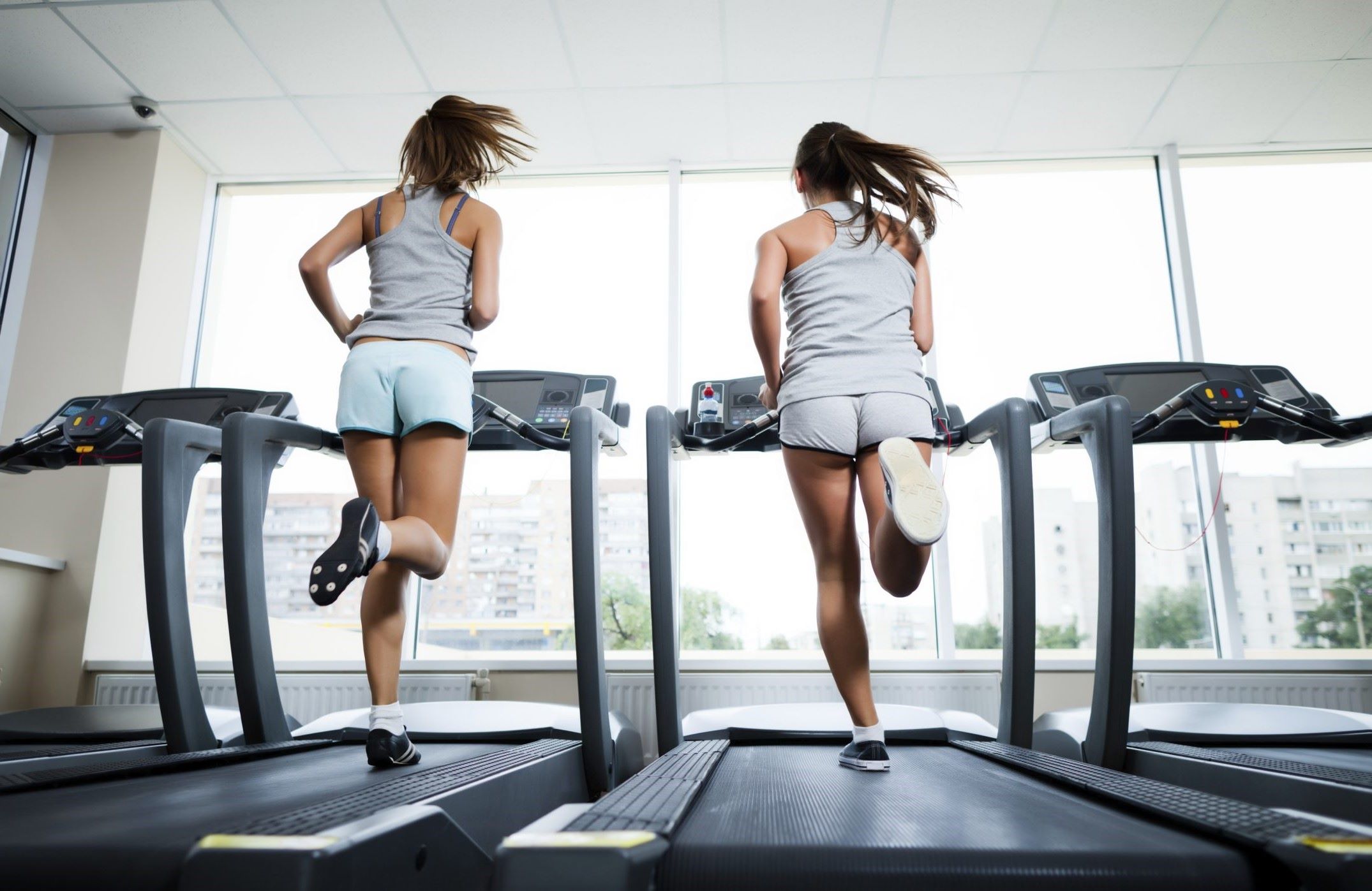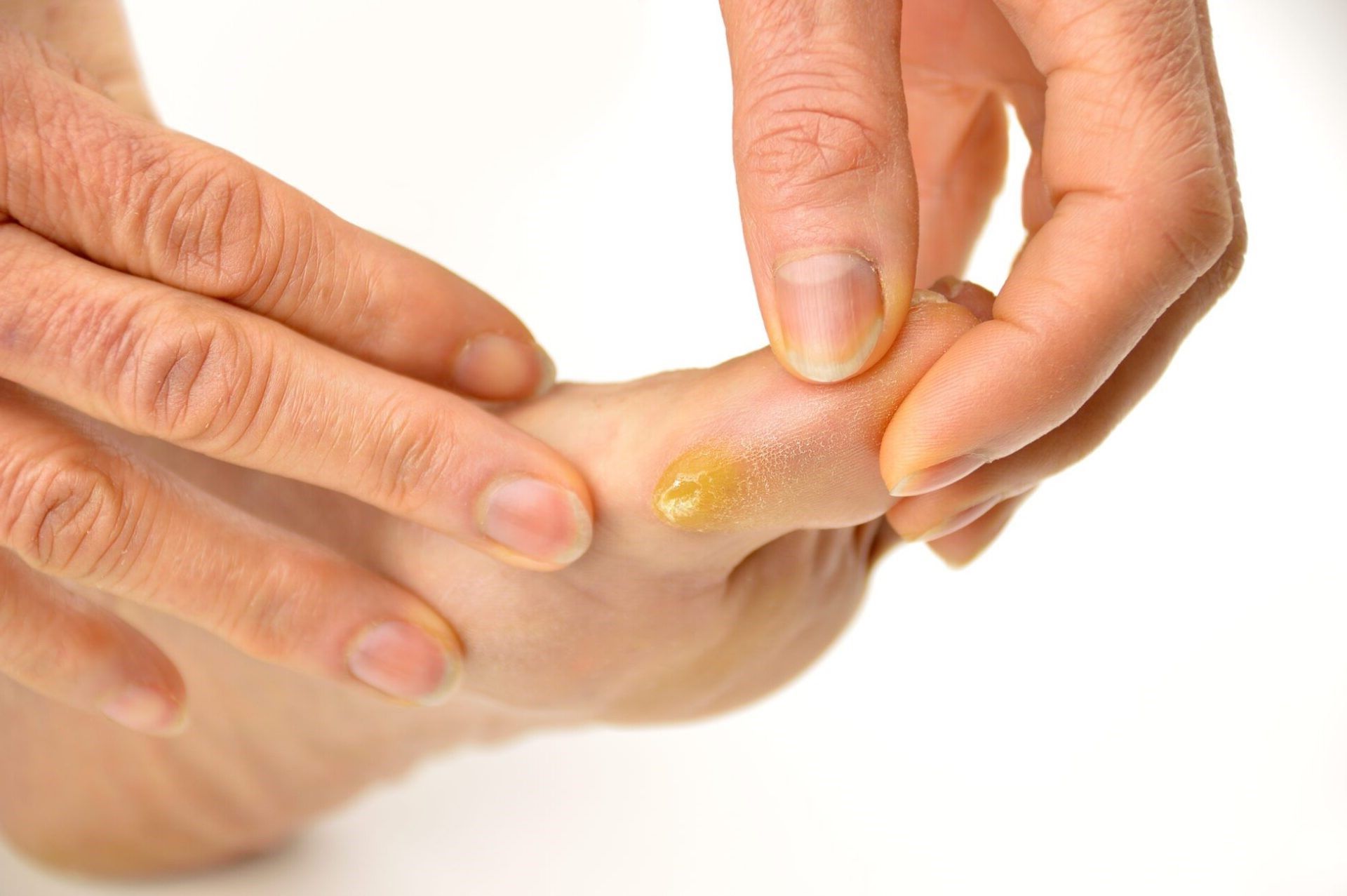Home>Health & Nutrition>Injury Prevention>Tips For Preventing Injuries While Running On The Treadmill


Injury Prevention
Tips For Preventing Injuries While Running On The Treadmill
Published: February 24, 2024
Discover effective tips for injury prevention while running on the treadmill. Learn how to stay safe and avoid common running injuries. Start your treadmill workouts with confidence!
(Many of the links in this article redirect to a specific reviewed product. Your purchase of these products through affiliate links helps to generate commission for Therunningadvisor.com, at no extra cost. Learn more)
Table of Contents
Importance of proper footwear
Selecting the right footwear is crucial for injury prevention while running on a treadmill. The shoes you wear can significantly impact your running experience and overall safety. Here's why proper footwear is essential:
-
Cushioning and Support: Running exerts force on your feet, and without adequate cushioning, this impact can lead to discomfort and potential injury. Proper running shoes are designed with cushioning to absorb shock and provide support, reducing the strain on your feet, ankles, and knees.
-
Stability and Traction: Treadmills require a stable footing to prevent slipping or losing balance. Shoes with good traction can help you maintain stability and grip, reducing the risk of falls or twisted ankles during your run.
-
Alignment and Comfort: The structure of your footwear plays a role in maintaining proper alignment and comfort. Ill-fitting or unsupportive shoes can lead to blisters, calluses, or even more severe issues such as plantar fasciitis or stress fractures.
-
Injury Prevention: Wearing the appropriate footwear can help prevent common running injuries such as shin splints, Achilles tendonitis, and runner's knee. By providing the necessary support and cushioning, well-designed running shoes can mitigate the impact on your body, reducing the likelihood of these injuries.
-
Enhanced Performance: The right shoes can also improve your running performance. They can help you maintain a consistent stride and proper form, allowing you to run more efficiently and with less effort.
In summary, investing in proper running shoes tailored to your foot type and running style is a fundamental step in injury prevention. It not only safeguards your physical well-being but also contributes to a more enjoyable and effective running experience.
Warm-up and stretching techniques
Before hopping onto the treadmill, it's crucial to prepare your body for the upcoming workout. Warm-up and stretching techniques play a pivotal role in injury prevention and overall performance. Here's a detailed look at the importance of these practices and how to incorporate them into your running routine.
The Importance of Warm-up
A proper warm-up gradually increases your heart rate, raises body temperature, and prepares your muscles, tendons, and ligaments for the upcoming physical activity. This initial phase of your workout helps to improve blood flow to the muscles, enhancing flexibility and reducing the risk of injury. Engaging in a warm-up routine can also mentally prepare you for the workout ahead, allowing you to focus and get into the right mindset.
Dynamic Stretching
Dynamic stretching involves active movements that mimic the activity you're about to perform. For treadmill running, dynamic stretches can include leg swings, walking lunges, high knees, and butt kicks. These movements help to improve flexibility, range of motion, and blood circulation, priming your body for the running motion.
Static Stretching
While dynamic stretching is ideal for the warm-up phase, static stretching is best reserved for the post-run cool-down. However, incorporating gentle static stretches for tight areas, such as the calves, hamstrings, and quadriceps, can be beneficial if performed after the dynamic warm-up. Holding each stretch for 15-30 seconds allows the muscles to relax and lengthen, promoting flexibility and reducing muscle tension.
Incorporating Warm-up and Stretching into Your Routine
Begin your treadmill session with 5-10 minutes of light cardio, such as brisk walking or a slow jog. This gradual increase in intensity will elevate your heart rate and warm up your muscles. Following the initial cardio phase, engage in dynamic stretching exercises for 5-10 minutes, focusing on movements that target the lower body and mimic the running motion. Once you've completed your run, transition into static stretching to help alleviate muscle tightness and promote recovery.
By integrating warm-up and stretching techniques into your treadmill running routine, you can significantly reduce the risk of muscle strains, joint injuries, and other common running-related issues. These practices not only contribute to injury prevention but also enhance your overall running experience, allowing you to perform at your best while safeguarding your physical well-being.
Maintaining proper posture and form
Maintaining proper posture and form while running on a treadmill is essential for injury prevention and optimal performance. Your posture directly influences the distribution of impact forces on your body and plays a significant role in reducing the risk of strain or injury. Here's a detailed exploration of the key elements involved in maintaining proper posture and form during treadmill running.
Head Position
Begin by ensuring that your head is in a neutral position, aligned with your spine. Avoid tilting your head up or down excessively, as this can lead to neck and upper back strain. Keeping your gaze forward, rather than looking down at your feet or the control panel, promotes proper alignment and helps prevent unnecessary strain on your neck and shoulders.
Upper Body Alignment
Maintain a relaxed yet stable upper body posture. Your shoulders should be relaxed and pulled back slightly, not hunched forward. Engage your core muscles to support your spine and stabilize your torso. Avoid excessive twisting or leaning to the sides, as this can lead to imbalances and potential strain on the muscles and joints.
Arm Position and Movement
Your arms should be bent at a comfortable angle, with your elbows close to your body. As you run, allow your arms to swing naturally back and forth, in sync with your stride. Avoid crossing your arms in front of your body, as this can disrupt your balance and lead to inefficient movement patterns. Proper arm movement not only contributes to overall stability but also helps propel you forward with each stride.
Lower Body Alignment
Focus on maintaining a smooth and consistent stride, with your feet landing directly beneath your body. Avoid overstriding, which can lead to increased impact forces and potential injury. Aim for a mid-foot strike, allowing your heel to lightly touch the treadmill surface before rolling through to the balls of your feet. This promotes a more efficient and natural running motion, reducing the strain on your lower limbs.
Posture Awareness
Throughout your run, periodically check in with your posture and form. Maintaining awareness of your body alignment can help you make real-time adjustments to prevent slouching, excessive leaning, or other posture-related issues. Engaging in regular posture checks can also enhance your overall running efficiency and reduce the risk of developing muscle imbalances or overuse injuries.
By prioritizing proper posture and form during treadmill running, you can minimize the impact on your body, reduce the risk of strain or injury, and optimize your running experience. Consistent attention to these key elements can contribute to improved running performance and long-term musculoskeletal health.
Using the safety clip
When it comes to running on a treadmill, safety should always be a top priority. One essential safety feature that often goes overlooked is the safety clip, also known as the safety key or emergency stop tether. This small yet critical component can make a significant difference in preventing accidents and injuries during treadmill workouts.
The safety clip is a simple yet ingenious device designed to immediately stop the treadmill if you drift too far back or lose control during your run. It consists of a clip attached to a cord, which is then connected to the treadmill's console. Before starting your workout, it's crucial to securely attach the safety clip to your clothing. In the event of a misstep, loss of balance, or any other situation that causes you to move too far back on the treadmill, the safety clip will disengage from the console, triggering an automatic shutdown of the machine.
This rapid shutdown mechanism serves as a crucial safety measure, preventing potential falls, injuries, or accidents that could occur if the treadmill were to continue running while the user is off balance or in a compromised position. The safety clip effectively acts as a fail-safe, providing peace of mind and an added layer of protection for treadmill users of all experience levels.
In addition to its primary safety function, the safety clip also serves as a reminder to maintain proper positioning and awareness while running on the treadmill. By attaching the safety clip and ensuring it is securely in place, users are prompted to stay centered on the treadmill deck, maintain focus, and avoid drifting too close to the rear edge, where the risk of injury is heightened.
It's important to note that the safety clip should be used consistently, regardless of running speed or experience level. Whether you're walking, jogging, or engaging in high-intensity sprints, the safety clip remains a critical safety feature that should never be overlooked. Its presence provides an added layer of protection, especially in home gym settings where immediate assistance may not be readily available in the event of an accident.
In summary, the safety clip is a fundamental component of treadmill safety, offering both a proactive reminder for proper positioning and a reactive fail-safe in the event of a potential mishap. By incorporating the use of the safety clip into your treadmill running routine, you can prioritize safety, minimize risks, and enjoy a more secure and confident workout experience.
Staying hydrated
Proper hydration is a cornerstone of safe and effective treadmill running. When engaging in physical activity, especially in a controlled indoor environment like a treadmill workout, it's easy to underestimate the impact of dehydration on performance and overall well-being. However, staying adequately hydrated is essential for maintaining optimal physiological function, supporting endurance, and reducing the risk of heat-related complications.
During treadmill running, the body undergoes increased exertion, leading to elevated core body temperature and perspiration. As a result, fluid loss occurs at a heightened rate, emphasizing the critical need for consistent hydration. Dehydration can manifest in various forms, ranging from mild symptoms such as increased thirst and dry mouth to more severe indications, including dizziness, muscle cramps, and diminished cognitive function. By prioritizing hydration, individuals can mitigate these potential effects and sustain their performance throughout their treadmill workouts.
To effectively stay hydrated during treadmill running, it's essential to establish a pre-run hydration routine. Begin by consuming an adequate amount of water in the hours leading up to your workout. This proactive approach helps ensure that your body starts the exercise session in a well-hydrated state, setting the stage for optimal performance and endurance.
During the treadmill workout itself, maintaining a steady intake of fluids is crucial. While the intensity and duration of the run will influence the specific fluid requirements, a general guideline is to consume approximately 7-10 ounces of water every 10-20 minutes during the workout. This approach helps replenish the fluids lost through perspiration, supporting thermoregulation and preventing dehydration-related complications.
In addition to water, incorporating electrolyte-rich beverages or sports drinks can be beneficial, especially during longer or more intense treadmill sessions. Electrolytes, such as sodium and potassium, play a vital role in fluid balance and muscle function, making them valuable additions to the hydration strategy. These beverages can help replenish electrolytes lost through sweat and provide a source of energy to sustain performance.
Post-run hydration is equally important for supporting recovery and rehydration. After completing a treadmill workout, continue to consume fluids to replenish any remaining fluid deficits and support the body's recovery processes. This post-run hydration phase contributes to the restoration of fluid balance, aiding in muscle recovery and overall well-being.
By integrating a comprehensive approach to staying hydrated before, during, and after treadmill running, individuals can optimize their performance, reduce the risk of dehydration-related issues, and promote overall well-being. Consistent attention to hydration not only supports physical function but also enhances the overall treadmill running experience, allowing individuals to perform at their best while safeguarding their health and safety.
Avoiding distractions
When engaging in treadmill running, maintaining focus and minimizing distractions are essential for both safety and performance. Distractions can compromise form, balance, and overall awareness, increasing the risk of accidents or injuries. Here's a detailed exploration of strategies to effectively avoid distractions and optimize the treadmill running experience.
Setting the Stage for Focus
Creating an environment conducive to focused treadmill running begins with minimizing external distractions. If possible, choose a workout space that is free from excessive noise, visual clutter, or other potential disruptions. By selecting a dedicated area for treadmill workouts, individuals can establish a consistent and distraction-free setting, promoting a more immersive and effective running experience.
Utilizing Technology Mindfully
While technology can enhance the treadmill running experience through entertainment or performance tracking, it's important to use it mindfully to avoid becoming overly absorbed in digital distractions. Consider setting specific boundaries for technology use during treadmill workouts, such as designating certain times for music, podcasts, or video content. By incorporating technology in a deliberate and controlled manner, individuals can strike a balance between engagement and focus.
Read more: Prevent Toenail Issues While Running
Mental Engagement and Mindfulness
Practicing mental engagement and mindfulness during treadmill running can significantly reduce the impact of potential distractions. Focusing on the present moment, the sensation of each stride, and the rhythm of breathing can help individuals stay grounded and attentive. Additionally, setting specific intentions or goals for the workout, such as maintaining a consistent pace or focusing on form, can channel mental energy toward productive and focused running.
Establishing Visual Anchors
Creating visual anchors within the workout space can aid in maintaining focus and reducing distractions. This can include positioning the treadmill in a location with a pleasant view or incorporating motivational visuals within the workout area. By surrounding oneself with positive and visually engaging elements, individuals can cultivate a more immersive and distraction-minimized running environment.
Practicing Self-Awareness
Developing self-awareness regarding potential distractions and their impact on running performance is crucial. By recognizing personal triggers for distraction, individuals can proactively address them and implement targeted strategies to mitigate their influence. This self-awareness empowers individuals to take control of their focus and optimize their running experience.
By implementing these strategies and cultivating a mindful approach to treadmill running, individuals can effectively minimize distractions, enhance focus, and elevate the overall quality of their workouts. Prioritizing a distraction-free environment not only contributes to safety and injury prevention but also fosters a more rewarding and immersive treadmill running experience.
Listening to your body
Listening to your body is a fundamental aspect of safe and effective treadmill running. It involves tuning into the physical cues and signals that your body provides during the workout, allowing you to make informed decisions and adjustments based on its feedback. This practice of body awareness not only contributes to injury prevention but also enhances the overall running experience, promoting a harmonious balance between exertion and well-being.
One of the primary components of listening to your body is acknowledging the sensations and signals it communicates during the run. This can include paying attention to your breathing patterns, heart rate, muscle fatigue, and overall energy levels. By attuning yourself to these internal indicators, you can gain valuable insights into your body's response to the treadmill workout, enabling you to adjust the intensity, pace, or duration as needed.
Furthermore, listening to your body involves differentiating between discomfort and pain. It's essential to recognize the difference between the natural exertion associated with physical activity and the onset of potential injury. Sensations of muscle fatigue or exertion are normal during a challenging workout, but sharp or persistent pain may indicate an underlying issue that requires attention. By discerning these signals, individuals can proactively address any warning signs and prevent the escalation of minor discomfort into more significant injuries.
Incorporating mindfulness into your treadmill running routine is a powerful way to enhance body awareness. Mindfulness involves being fully present in the moment, focusing on the physical sensations and movements of the body as they occur. By practicing mindfulness during treadmill running, individuals can deepen their connection with their body, fostering a heightened awareness of its needs and limitations.
Another crucial aspect of listening to your body is respecting its limits and responding to its cues with compassion and understanding. This involves being open to modifying your workout based on how your body feels, whether it's adjusting the speed, incline, or duration of the run. By honoring your body's signals and making adjustments accordingly, you can prioritize its well-being and longevity, ultimately contributing to a sustainable and fulfilling running practice.
In summary, listening to your body during treadmill running is a holistic practice that encompasses body awareness, mindfulness, and compassionate responsiveness. By attuning yourself to the signals and sensations your body provides, you can optimize your running experience, reduce the risk of injury, and cultivate a harmonious relationship between physical exertion and well-being. This mindful approach not only enhances safety and injury prevention but also fosters a deeper connection with your body, enriching the overall treadmill running experience.
Gradually increasing intensity
Gradually increasing the intensity of your treadmill workouts is a strategic approach that promotes both performance improvement and injury prevention. This method involves systematically and incrementally elevating the level of exertion and challenge in your running sessions over time. By implementing a gradual progression in intensity, individuals can optimize their physical adaptation, enhance cardiovascular fitness, and reduce the risk of overuse injuries.
The key principle behind gradually increasing intensity is to allow the body to adapt and acclimate to higher levels of physical demand progressively. This approach is particularly relevant for individuals who are transitioning from lower levels of physical activity or are incorporating treadmill running into their fitness routine for the first time. By starting with manageable intensity levels and gradually ramping up the challenge, individuals can build a solid foundation of strength, endurance, and cardiovascular capacity while minimizing the risk of strain or injury.
One effective strategy for gradually increasing intensity is to manipulate variables such as speed, incline, and duration in a controlled and progressive manner. For example, individuals can begin with a moderate pace and incline setting for their initial treadmill sessions, gradually increasing either the speed or incline in subsequent workouts as their fitness level improves. This incremental approach allows the body to adapt to the escalating demands, fostering physiological adaptations and performance enhancements over time.
Incorporating interval training is another valuable method for gradually increasing intensity. By alternating between periods of higher intensity (e.g., sprinting or increased incline) and active recovery, individuals can challenge their cardiovascular system while allowing for brief periods of rest. This structured approach to intensity progression not only enhances aerobic capacity but also provides a framework for controlled and sustainable performance improvements.
It's important to emphasize the significance of listening to your body and respecting its response to the escalating intensity. Monitoring physical cues such as heart rate, breathing patterns, and perceived exertion can guide the pace of intensity progression. Additionally, being attentive to any signs of excessive fatigue or strain allows individuals to adjust the intensity levels accordingly, ensuring a balanced and sustainable approach to progression.
In summary, gradually increasing the intensity of treadmill workouts is a strategic and systematic approach that supports performance enhancement and injury prevention. By methodically progressing the challenge level while maintaining attentiveness to the body's response, individuals can optimize their physical adaptation, elevate cardiovascular fitness, and minimize the risk of overuse injuries. This deliberate and controlled approach to intensity progression sets the stage for sustainable and rewarding treadmill running experiences, fostering long-term health and well-being.
Cooling down and stretching after your run
After completing your treadmill run, dedicating time to a proper cool-down and stretching routine is essential for promoting recovery, reducing muscle tension, and supporting long-term musculoskeletal health. This post-run phase serves as a crucial transition from the heightened exertion of the workout to a state of relaxation and recovery, allowing the body to gradually return to its resting state while addressing the physiological effects of the exercise.
The Importance of Cooling Down
Initiating a cooldown period after your treadmill run is instrumental in facilitating the body's transition from vigorous activity to a state of rest. This gradual reduction in exercise intensity helps lower heart rate, regulate blood flow, and prevent the pooling of blood in the lower extremities. By incorporating a cooldown phase, individuals can minimize the risk of post-exercise dizziness or lightheadedness while promoting a smoother physiological recovery process.
Active Recovery and Gentle Movement
Engaging in active recovery during the cooldown phase can further support the body's transition to a resting state. This can involve light walking or gentle jogging at a significantly reduced pace compared to the main workout. The purpose of active recovery is to sustain blood circulation, facilitate the removal of metabolic byproducts from the muscles, and promote a gradual return to baseline physiological function.
Incorporating Static Stretching
Following the active recovery component, integrating static stretching exercises can help alleviate muscle tightness and enhance flexibility. Targeting major muscle groups used during the treadmill run, such as the quadriceps, hamstrings, calves, and hip flexors, can aid in reducing post-exercise muscle tension and promoting a greater range of motion. Holding each stretch for 15-30 seconds allows the muscles to relax and lengthen, contributing to improved flexibility and a sense of physical relaxation.
Mindful Breathing and Relaxation
As you engage in post-run stretching, focusing on mindful breathing and relaxation techniques can further enhance the recovery process. Deep, diaphragmatic breathing can promote a sense of calm and aid in releasing muscular tension. Embracing a mindful and present-focused mindset during the stretching routine can also support mental relaxation, allowing for a holistic recovery experience that encompasses both physical and mental well-being.
Hydration and Nutritional Replenishment
The post-run cooldown and stretching phase also provides an opportune moment to prioritize hydration and nutritional replenishment. Replenishing fluids lost during the workout and consuming a balanced post-exercise snack or meal can support muscle recovery and replenish energy stores. This comprehensive approach to recovery contributes to the body's overall restoration and prepares it for future physical activity.
In summary, dedicating time to a thorough cooldown and stretching routine after your treadmill run is a valuable investment in your overall well-being and long-term running performance. By incorporating active recovery, static stretching, mindful relaxation, and nutritional replenishment into your post-run routine, you can optimize the recovery process, reduce the risk of muscle tightness or injury, and foster a balanced and sustainable approach to treadmill running.










